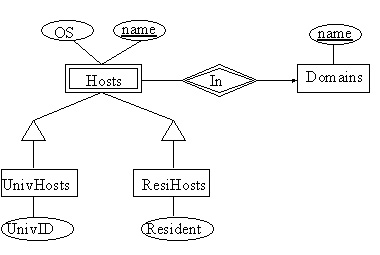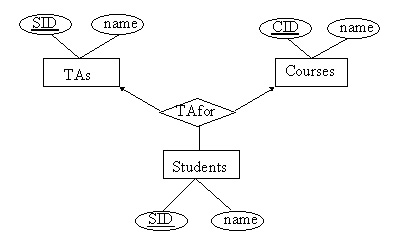The E/R model is --

The ODL model is --
interface Domains
(key name)
{
attribute string name;
relationship Set Hooks
inverse Hosts::HookedIn;
}
interface Hosts
{
attribute string name;
attribute string OS;
relationship Domains HookedIn
inverse Domains::Hooks;
}
interface UnivHosts: Hosts
{
attribute int UnivID;
}
interface ResiHosts: Hosts
{
attribute string Resident;
}
interface RAHosts: UnivHosts, ResiHosts
{
}
Please create relational database schemas as follows --
- E/R style: Convert the E/R model to relational model.
- ODL style: Convert the ODL model to relational model. Note: class "Host" has no key. Try to make one instead of borrowing one from "Domain" as in E/R.
- Using nulls: Write one relation (allowing null) representing the class and subclasses, and explain how it represents all the necessary information.

- Explain briefly what the two arrows mean.
- Convert the relationship TAfor to a relation, and give all the possible keys.
- What are all the nontrivial functional dependencies that follow from the given dependencies? You need only consider single attributes on the right side.
- What are all the keys of R?
- What are all the superkeys that are not (minimal) keys?
- If AB->AC, then B->C.
- If AB->C, then A->B or A->C.
- If A->B and BC->D, then ABC->D.